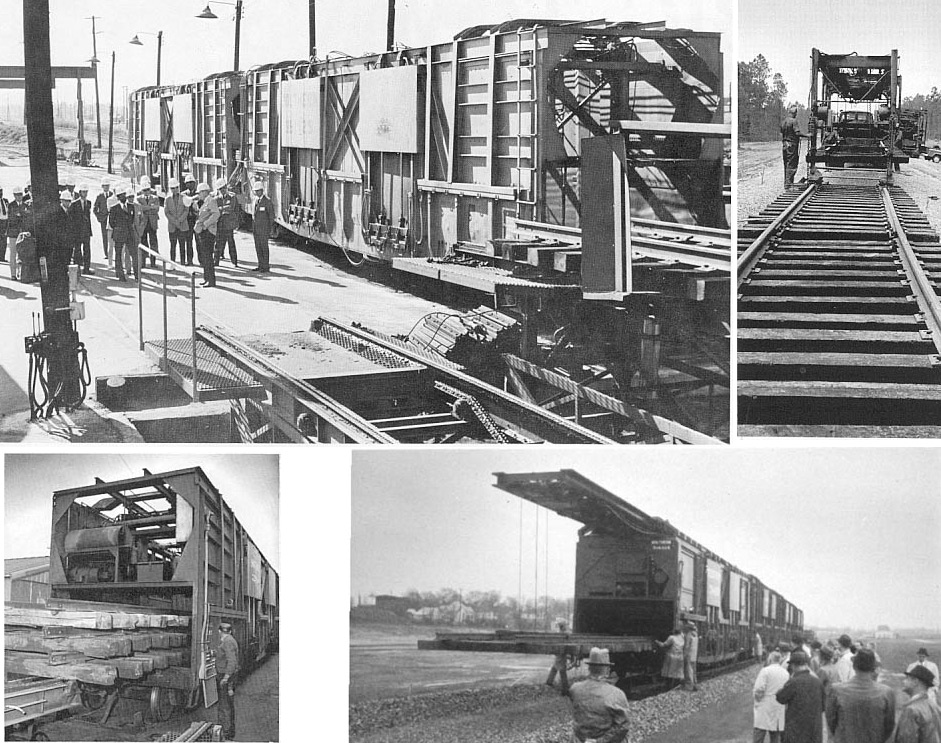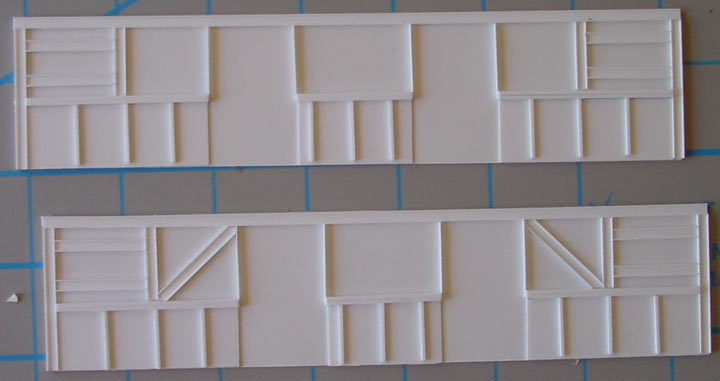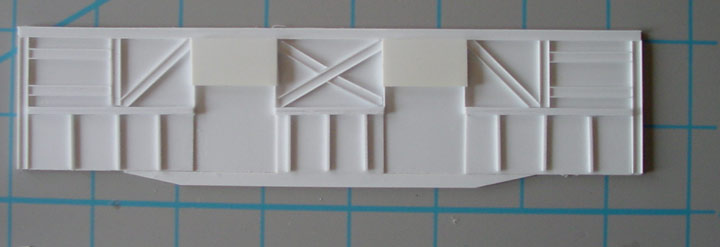I have again started working on one lead and two drone type track cars that were built by Southern in their Coster shops to carry track panels. The first time building these cars I started with a couple of Athearn gon, but none of the ribs lined up correctly, and the side walls were not straight.
Southern built two types of these cars, and here is a little background:
Lead 991126 – 991127
The lead cars are used to lower the track panels. A photo of one is at the bottom right.
Drone 991101 - 991125
The drone car carry the track panels, and pass them to the lead car to be placed on the ground.
The photos and text below are from the September 1966 Ties Magazine.
Completed track panels move three at a time on powered roller chains into a line of special cars. Each car holds nine to ten panels. Panels already loaded are hydraulically lifted to allow the next set of panels to be moved in underneath. When the end car is loaded, power roller chains in the floor of the car can be activated to move the entire load of panels into the next car. These special cars are also equipped with devices to lower the track panels into place on the ground at the installation site.
There is a photo in the Southern Color Guide by Jim Kinkaid. From this photo it appears that this car is self propelled, with the gear and chain below the left hand side of the car. I have only seen these cars in person once in 1996 when I visited Spencer. They was a string of them in the yard, that could be seen from the train ride.
 http://www.garlic.com/~tomd/railforums/tp/trackpanelcoll.jpg
http://www.garlic.com/~tomd/railforums/tp/trackpanelcoll.jpg
First step, create a working drawing.

Now for second attempt at building these cars. The plan is for a 100% scratch built car.
Next start cutting, measuring, more cutting and gluing. The starting point is 0.020 sheet styrene.

Many different Evergreen strips and channel.

Seems like only one in two of the diagonal pieces that I cut fit, even with using a jig.

So far, each side has 34 separate styrene pieces, with about 20 more to finish each side. I need six sides to finish three cars.
I do not know how I am going to deal with all of the hydraulic lines - wire wrap wire. I may differ from the prototype, and put these lines behind a panel.
What is left to do
- finish the sides
- build the bases - 0.040 styrene
- build the ends - still looking for more photos
- build the tops - still looking for more photos
- paint and decal
I am a fairly novice scratch builder, and am pleased with my progress so far.
What do the rest of you think?
Southern built two types of these cars, and here is a little background:
Lead 991126 – 991127
The lead cars are used to lower the track panels. A photo of one is at the bottom right.
Drone 991101 - 991125
The drone car carry the track panels, and pass them to the lead car to be placed on the ground.
The photos and text below are from the September 1966 Ties Magazine.
Completed track panels move three at a time on powered roller chains into a line of special cars. Each car holds nine to ten panels. Panels already loaded are hydraulically lifted to allow the next set of panels to be moved in underneath. When the end car is loaded, power roller chains in the floor of the car can be activated to move the entire load of panels into the next car. These special cars are also equipped with devices to lower the track panels into place on the ground at the installation site.
There is a photo in the Southern Color Guide by Jim Kinkaid. From this photo it appears that this car is self propelled, with the gear and chain below the left hand side of the car. I have only seen these cars in person once in 1996 when I visited Spencer. They was a string of them in the yard, that could be seen from the train ride.

First step, create a working drawing.

Now for second attempt at building these cars. The plan is for a 100% scratch built car.
Next start cutting, measuring, more cutting and gluing. The starting point is 0.020 sheet styrene.

Many different Evergreen strips and channel.

Seems like only one in two of the diagonal pieces that I cut fit, even with using a jig.

So far, each side has 34 separate styrene pieces, with about 20 more to finish each side. I need six sides to finish three cars.
I do not know how I am going to deal with all of the hydraulic lines - wire wrap wire. I may differ from the prototype, and put these lines behind a panel.
What is left to do
- finish the sides
- build the bases - 0.040 styrene
- build the ends - still looking for more photos
- build the tops - still looking for more photos
- paint and decal
I am a fairly novice scratch builder, and am pleased with my progress so far.
What do the rest of you think?


